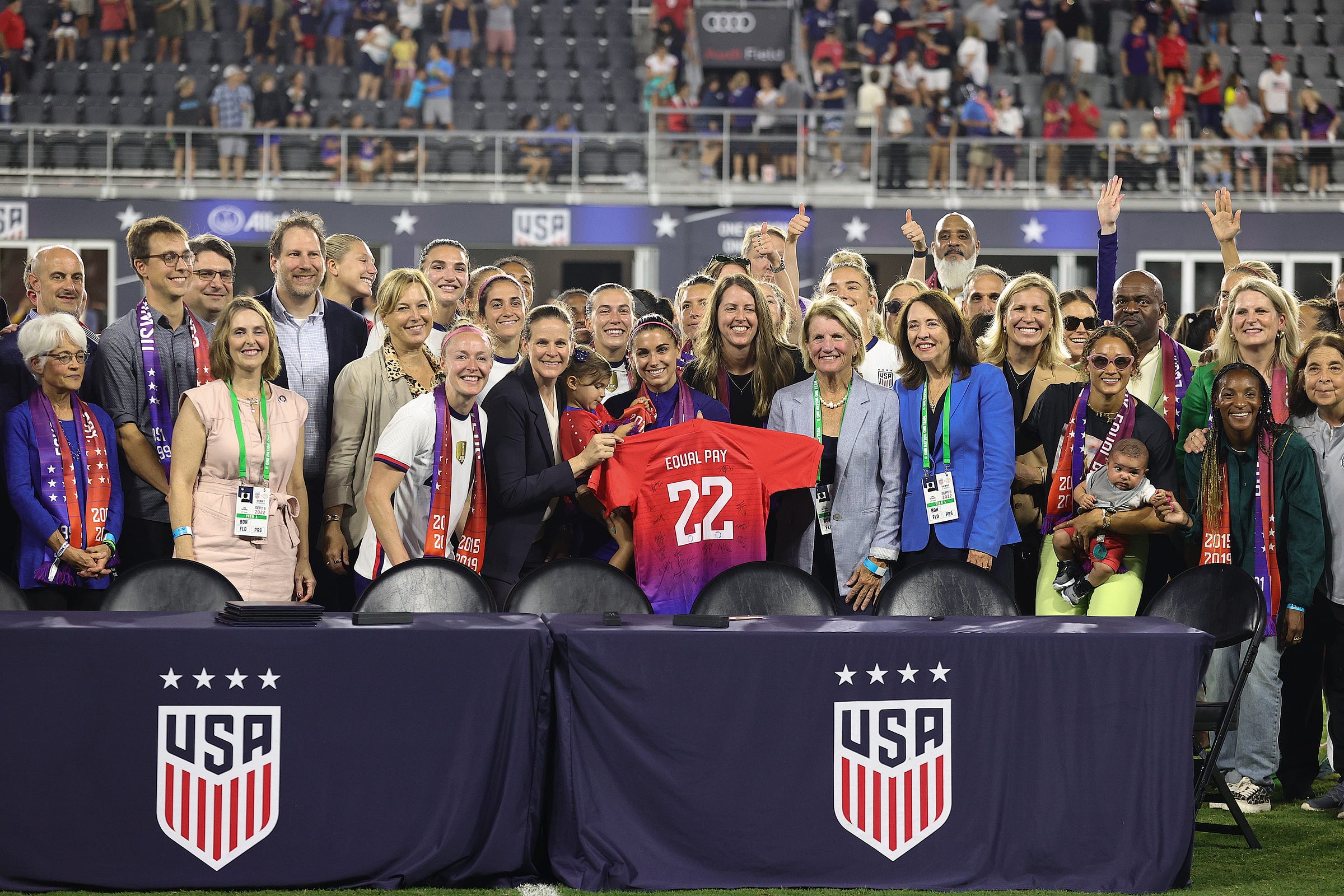Let’s keep up momentum on women’s soccer
as North America prepares to host the 2026 FIFA Men’s World Cup
Words: Sydney, New Jersey
As a female soccer player I’ve been inspired by the US Women’s National Soccer Team’s victories in their fight for equal pay. In 2022, they won a landmark agreement that the national Men’s and Women’s teams will be paid equally through December 2028. However, reflecting on gender inequality and the issue of equal pay chips away at my passion for soccer. This will be on my mind as New Jersey, my home State, prepares for its role as a host location for the 2026 Men’s World Cup and the attention on the sport that will follow. I wish I could say that the world of soccer has always been equal and fair for every player. Unfortunately, this is not the case. The soccer World has come a long way in the fight for equality in this sport, but time should be taken to reflect on its past.

To begin, there has been a significant discrepancy in media coverage of male and female sports. Inequality in media representation also reflects sponsorship deals, as women’s soccer teams typically struggle to secure the same level of commercial support as their male counterparts. A study found that in 2019, coverage of women athletes on televised news and highlight shows in the United States totaled only 5.4% of all their airtime. But as a sign of momentum through soccer, almost 2 percent of the coverage was in relation to the women’s World Cup. United States viewership of the 2019 Women’s World Cup final hit 14.3 million, which was 22 percent more than for the 2018 Men’s World Cup.
Another disconcerting issue tied to gender inequality is access to facilities and resources. Female players often do not have access to the same quality of training facilities, staff, or medical care as males. Additionally, women's teams often travel in less comfortable conditions. A notable example came in 2015, when the Australian Women’s team (the Matildas) had to endure below-standard travel arrangements compared to the men's team, even though they outperformed the men’s team.
Lastly, and most notably, there is the issue of World Cup pay inequality. This issue was most prominent in the 2019 Women’s World Cup. Despite being reigning world champions, the US Women’s National Team earned less from their 2019 World Cup victory than the US Men’s national team had received after their earlier World Cup campaigns, where they had not won. This disparity was criticized as the men’s team had failed to qualify for the 2018 World Cup, while the women's team not only qualified but dominated in the tournament. This led to lawsuits and advocacy, eventually culminating in the 2022 equal pay settlement.
I hope there is a World in which women’s soccer is just as talked about as men’s soccer.
All in all, it is clear the past of soccer as a sport is not entirely positive. Female athletes have gone through discrimination and inequality, and it can be argued there are still issues today. Nonetheless, improvements have been made and settlements have been created. My wish for the future of soccer is that talk of discrimination of women vs men should be unheard of; and I hope there is a World in which women’s soccer is just as talked about as men’s soccer. Female soccer players should forever be proud of the progress made, and never forget the determination that led to these improvements. It is only up from here.
Sydney is a New Jersey based participant in Youth Media Forward: meet the New York New Jersey participants here


